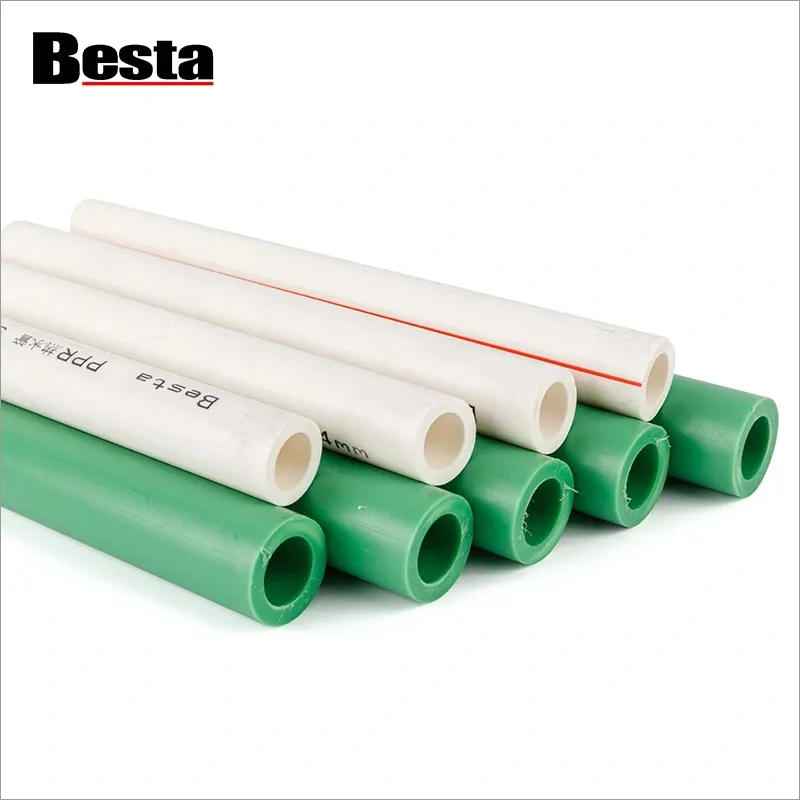- English
- Español
- Português
- русский
- Français
- 日本語
- Deutsch
- tiếng Việt
- Italiano
- Nederlands
- ภาษาไทย
- Polski
- 한국어
- Svenska
- magyar
- Malay
- বাংলা ভাষার
- Dansk
- Suomi
- हिन्दी
- Pilipino
- Türkçe
- Gaeilge
- العربية
- Indonesia
- Norsk
- تمل
- český
- ελληνικά
- український
- Javanese
- فارسی
- தமிழ்
- తెలుగు
- नेपाली
- Burmese
- български
- ລາວ
- Latine
- Қазақша
- Euskal
- Azərbaycan
- Slovenský jazyk
- Македонски
- Lietuvos
- Eesti Keel
- Română
- Slovenski
- मराठी
- Srpski језик
What Are the Installation Requirements for Type L Copper Pipe?
2024-10-08
When it comes to installing a reliable plumbing system, choosing the right material is crucial, especially for applications like hot water distribution. Type L Copper Pipe for Hot Water is one of the most popular choices due to its durability, corrosion resistance, and ability to handle high-pressure water systems. But installing this type of copper pipe requires following specific guidelines to ensure long-lasting performance and compliance with safety standards.

1. What Is Type L Copper Pipe?
Before diving into the installation process, it's essential to understand what Type L Copper Pipe is and why it's commonly used in plumbing. Copper pipes come in different thicknesses or types: Type K, Type L, and Type M. Among these, Type L copper pipe falls in the middle regarding wall thickness and is widely preferred for water supply, particularly in hot water systems.
1.1. Why Choose Type L Copper Pipe?
- Medium Wall Thickness: Type L copper pipe has a thicker wall than Type M but is thinner than Type K, making it suitable for both interior and exterior water supply applications.
- Durability: It's resistant to corrosion, temperature changes, and general wear, which makes it ideal for both hot and cold water supply systems.
- Hot Water Compatibility: Due to its ability to withstand higher pressure and temperature, Type L Copper Pipe for Hot Water is commonly used in residential hot water plumbing and hydronic heating systems.
Now that we know why this pipe is commonly chosen, let’s move on to the installation requirements.
2. Sizing and Preparation
Proper sizing and preparation of Type L Copper Pipe are crucial for ensuring the system runs smoothly. Whether you’re working on a new build or upgrading an existing system, careful planning and adherence to installation codes will save you time and money in the long run.
2.1. Determine the Correct Pipe Size
The first step in the installation process is determining the correct pipe size for your hot water system. Sizing is usually based on the required flow rate and the length of the pipe run. Using a pipe that’s too small can restrict water flow and increase pressure, while an oversized pipe can lead to inefficiencies in water heating.
The most common diameters for Type L copper pipe in residential installations are:
- ½ inch for individual fixtures.
- ¾ inch for branch lines.
- 1 inch for the main water supply line.
2.2. Pipe Cutting and Preparation
Before installing the pipe, it must be cut to the required length. It’s essential to use a specialized pipe cutter designed for copper to avoid distorting the pipe ends. After cutting, the burrs (sharp edges) inside and outside the pipe must be removed using a deburring tool. This helps prevent obstructions in water flow and ensures a clean joint during the soldering process.
3. Fitting and Joining Methods
Type L Copper Pipe for Hot Water is typically joined using either soldering or press-fit methods. The choice of method depends on the type of project, local building codes, and personal preference.
3.1. Soldering (Sweating) the Copper Pipe
Soldering is the most common method for joining copper pipes. It involves heating the pipe and fitting and applying solder to create a watertight seal. Here's how to solder Type L copper pipe effectively:
- Step 1: Clean the Pipe and Fittings: Use an emery cloth or a pipe-cleaning brush to clean the outside of the pipe and the inside of the fitting. This removes oxidation and dirt, allowing the solder to bond properly.
- Step 2: Apply Flux: Flux is a chemical agent that helps the solder flow evenly into the joint. Apply it to both the pipe and the fitting before assembling them.
- Step 3: Heat the Joint: Use a propane torch to heat the fitting evenly. When the fitting is hot enough, the solder will be drawn into the joint. Ensure that the entire circumference of the joint is properly soldered to avoid leaks.
- Step 4: Allow the Joint to Cool: Once soldered, let the joint cool naturally. Don’t use water or air to cool it, as this can weaken the connection.
3.2. Press-Fit Copper Connections
In recent years, press-fit copper fittings have become increasingly popular due to their speed and ease of installation. These fittings require a specialized tool to press the joint together, creating a secure seal without the need for soldering.
- Faster Installation: Press-fit systems are faster than soldering, making them ideal for large-scale projects or tight spaces.
- Safer Option: Since press-fit systems don’t require an open flame, they are safer to use in areas where flammable materials may be present.
However, press-fit fittings are more expensive than traditional soldered connections, so the method you choose will depend on your project’s budget and scale.
4. Insulating the Pipes
Type L Copper Pipe for Hot Water is prone to heat loss, especially in long runs, so insulating the pipes is an important step in the installation process. Insulating the pipes ensures that the hot water reaches the fixtures at the desired temperature without losing heat along the way, which improves energy efficiency and reduces heating costs.
4.1. Types of Pipe Insulation
- Foam Insulation: This is the most common type of insulation used for copper pipes. It’s easy to install and provides a decent level of insulation.
- Fiberglass Insulation: For higher temperature applications or outdoor installations, fiberglass insulation may be a better choice, as it can withstand extreme temperatures.
Ensure that all hot water pipes, especially those running through unconditioned spaces like basements or attics, are fully insulated.
5. Adhering to Local Building Codes
When installing Type L Copper Pipe, it is essential to follow local plumbing codes and regulations. These codes vary by region and dictate requirements like pipe sizing, insulation, and installation practices. Failure to comply with these codes can lead to issues down the line, including water leaks, inefficiencies, and costly repairs.
5.1. Permits and Inspections
In many jurisdictions, permits are required for plumbing work, especially when installing or upgrading a hot water system. Make sure to obtain the necessary permits before starting the project and schedule inspections to ensure that your installation complies with local standards.
5.2. Backflow Prevention and Anti-Scald Devices
For hot water systems, some building codes also require the installation of backflow prevention devices and anti-scald devices to ensure safety. These additional components protect against contamination of the water supply and reduce the risk of burns from excessively hot water.
Installing Type L Copper Pipe for Hot Water requires careful preparation, adherence to local building codes, and attention to detail to ensure long-lasting performance. Whether you opt for soldering or press-fit fittings, ensuring a proper installation will help prevent future issues and maintain the efficiency of your hot water system. By following the guidelines outlined in this blog, you can ensure that your copper piping system will serve your needs for many years to come.
Ningbo Ouding Building Material Technology Co., Ltd. is a comprehensive enterprise integrating mold manufacturing and injection molding. Founded in 2010, the company has complete mold processing equipments, mold design and mold manufacturing teams, as well as a professional pipe production line to produce PPR pipe, and multiple injection machines to produce complete PPR pipe fittings, valves, etc. Learn more about what we offer by visiting our website at https://www.albestahks.com. For questions or support, contact us at devy@albestahk.com.




